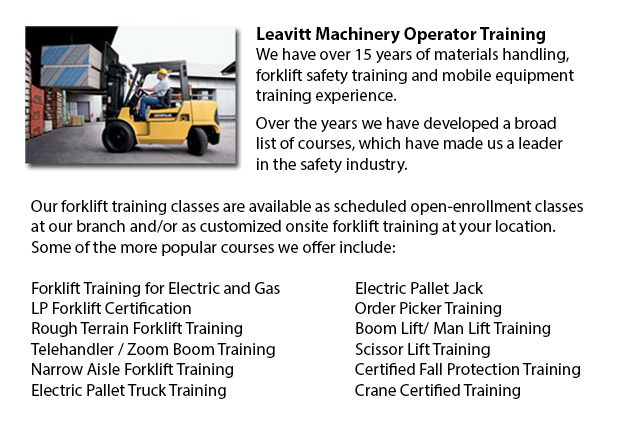
There are actually two categories of lift trucks within the manufacturing business, the rough terrain model and the industrial version. Rough terrain lift trucks appeared in the 1940â??s intended primarily for use on irregular surfaces, perfect for lumberyards and building sites, providing lifting power when there was no paved surface accessible.
Typically, most rough terrain forklifts are run on a propane, diesel or gas powered internal combustion engines with a battery used for power. Some manufacturers are playing with rough ground forklifts that utilize vegetable matter and run from ethanol. Huge pneumatic tires with deep treads characterize these vehicles to allow them to clutch onto the roughest ground type without any slippage or sliding.
The most basic models of rough terrain forklifts were able to carry weights of up to 1000 lbs, with blades that could run under the item, jack it a tiny bit and then move it to a different location. After some time on the market, rough terrain forklifts had been given supplementary shipping power to about 2000 lbs capacity. Telescoping booms were added in the 1960â??s, enabling them to stack supplies a good deal higher than in previous years. The telescoping design feature is a staple of most rough terrain forklifts these days. Present models are capable of managing well over 4000 lbs due to the continuous improvements over time. Telescoping capability has also improved with some designs achieving a height of 35 feet. Worker safety has also become a focus with several rough terrain lift trucks now designed are equipped with an enclosed cab for the driver, versus the older open air seating capacity.
The rough terrain forklifts on the market these days both function skillfully on unpaved surfaces and paved floors. This style of rough terrain lift truck is marketed for itsâ?? usefulness permitting the opportunity for companies to use one unit to carry materials from an outside working area into a warehouse.
-
Pneumatic Forklifts
Pneumatic lifts are often called pallet vehicles or pump trucks and are extensively utilized in warehouses and shipping facilities to move resources on pallets. Pneumatic lifts consist of a set of steel blades mounted on a wheeled counterbalance that... More -
Scissor Pallet Trucks
Scissor lift pallet trucks are built to be able to transport and stack pallets with a built-in lifting device that enables the pallets to be elevated. This equipment is extremely effective for working in restricted spaces that does not tolerate a fu... More -
Boom Trucks
A boom truck is frequently recognized by the cable and telephone business vans that have the long arm folded over their roofs. Commonly, a bucket-like apparatus sits at the extension of extendable arms. Normally referred to as a cherry picker, or an... More -
Komatsu Forklift
Komatsu Forklift U.S.A. Inc., an affiliate of the Komatsu Ltd. family, has an encouraging reputation for building robust and reliable lift trucks. They are known globally as a business who has a proud heritage and who maintains a benchmark of quality... More -
Pallet Lifts
A pallet jack is a model of equipment dedicated in the maneuvering of pallets of various dimensions and weights. They might be utilized as an appendage for forklifts, cranes and other kinds of heavy machinery or be utilized on their own. Pallet hoist... More

Forklift Certification Surrey
TOLL FREE: 1-888-254-6157
24389 Fraser Highway
Langley, British Columbia
forkliftcertificationsurrey.com
Email Us
About Us


